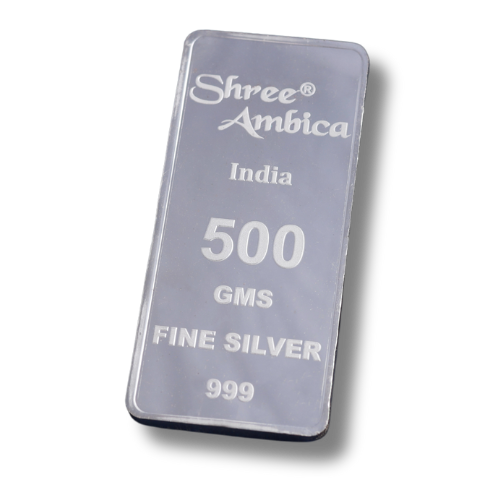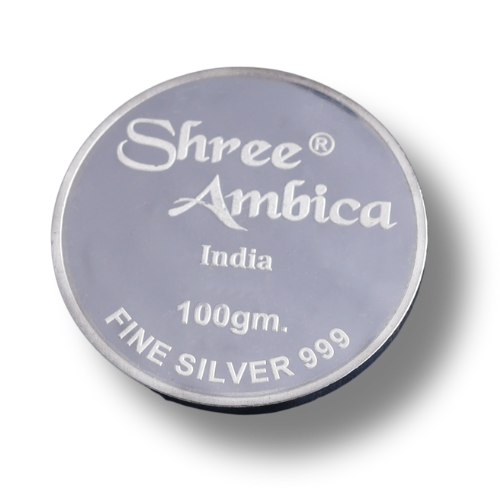
Best Time to Buy Gold in 2025
January 10, 2025
Gold Hallmarking: Ensuring Authenticity and Consumer Protection
January 30, 2025Choose the Best Silver Grade for Jewellery and Investments

Introduction
When it comes to purchasing silver, whether for jewellery or investment purposes, choosing the right silver grade is important. The silver grade affects not only the quality of the piece but also its durability, appearance, and value.
Learn how to choose the best silver grade for your needs, whether you're creating beautiful silver jewellery or looking to invest in silver bullion.
Understanding Silver Grades
Silver Grades refer to the purity of the silver used in various products. Purity is usually measured in parts per thousand, with 999 representing pure silver. However, most silver products are combined with other metals for strength, durability, and flexibility.
- Sterling Silver (925): Sterling silver is made up of 92.5% pure silver and 7.5% other metals (usually copper). This is the most common silver grade used in jewellery due to its balance of affordability, durability, and appearance.
- Fine Silver (999): Fine silver is 99.9% pure silver. While it is soft and more sensitive to scratching, it is ideal for high-end jewellery and investment-grade silver bullion.
- Coin Silver: Coin silver, generally made from melted-down coins, typically contains around 90% silver and is commonly used in silverware and jewellery.
Silver for Jewellery
When selecting silver for jewellery durability, quality, and comfort of maintenance are key factors to consider.
- Sterling Silver: With its strong structure, sterling silver is perfect for rings, necklaces, bracelets, and other pieces of jewellery. It has well to daily wear and maintains its shine with minimal care.
- Fine Silver: Fine silver, being 99.9% pure, offers a brilliant, shiny finish but is more liable to yellow and scrape. It’s often used for premium jewellery designs and high-end pieces.
- Other Silver Metals: Some jewelers prefer silver metals such as Nickel Silver, which is a more tarnish-anti version of sterling silver, making it ideal for long-lasting jewellery.
Silver for Investment
Silver is not only a beautiful metal for creating jewellery but also an attractive asset for investors. When purchasing silver for investment purposes, the silver grade is very important in finding the value and liquidity of the asset.
- Silver Bullion: Silver bullion bars and coins are typically made from fine silver (999). This high-purity silver is preferred for investment purposes due to its relatively high value per ounce and quality of trade.
- Silver Coins: Investing in silver coins, like American Silver Eagles or Canadian Maple Leafs, guarantees a high silver content. These coins are typically 99.9% pure, making them highly valuable for collectors and investors similarly.
- Market Value: The value of silver moves based on purity, and higher-purity silver (such as 999) generally orders a premium in the market.
How to Identify Silver Purity Grades
Silver purity is often indicated by specific marks on the item, representing the percentage of silver content. Here are some common silver purity hallmarks to look for:
- .999: This indicates 99.9% pure silver, often referred to as fine silver. It is one of the highest purity levels available.
- .958: Known as Britannia silver, it contains 95.8% silver and is a popular standard in Britain.
- .925: This stamp represents sterling silver, which is 92.5% pure silver and the most defined silver standard.
- .900: Marked for coin silver, which is 90% pure silver and was historically used for minting coins and bullion.
- .800: This mark indicates silver with 80% pure silver, with the remaining 20% made up of other metals. It is of lower purity compared to sterling or coin silver.
Factors to Consider When Choosing Best Silver Grade
Various factors affect the choice of silver grade, depending on whether you're buying silver for jewellery or investment:
- Budget: Real silver is more affordable, while fine silver is a higher price due to its purity.
- Intended Use: If you're making jewellery, sterling silver is the most practical choice, while fine silver may be more suitable for collectors and investors.
- Market Trends: Always consider the market value of silver and how it fluctuates, especially when buying silver for investment purposes.
Comparing Silver Grades
Here's a quick comparison of the most popular silver grades:
How to Identify Silver Purity Marks in India
There are different ways to check silver purity in India. Let’s look at some of them.
- Smell Test: If the ornament has an unusual smell, it's likely not silver. However, perfumes on the item may affect this test.
- Sound Test: Lightly tap the jewellery. A clear ping lasting a couple of seconds indicates silver. A dull sound suggests it’s not silver.
- Magnet Test: Silver isn’t magnetic. If the ornament is attracted to a magnet, it’s not silver.
- Ice Cube Test: Place an ice cube on the jewellery. If it melts faster than usual, the ornament is likely silver.
- Acid Test: Apply a small amount of acid. Pure silver will leave a red, brown, or white stain.
- Polish Cloth Test: Polish the item with a cloth. If it turns black, it’s likely silver.
- Check for Hallmarks: Look for a BIS hallmark. Real silver items typically highlight this mark, guaranteeing authenticity.
Conclusion
Choosing the right silver grade guarantees you get the perfect balance of quality, durability, and value—whether for stunning jewellery or smart investments.
Contact Shree Ambica Touch today for premium silver products and expert guidance.










